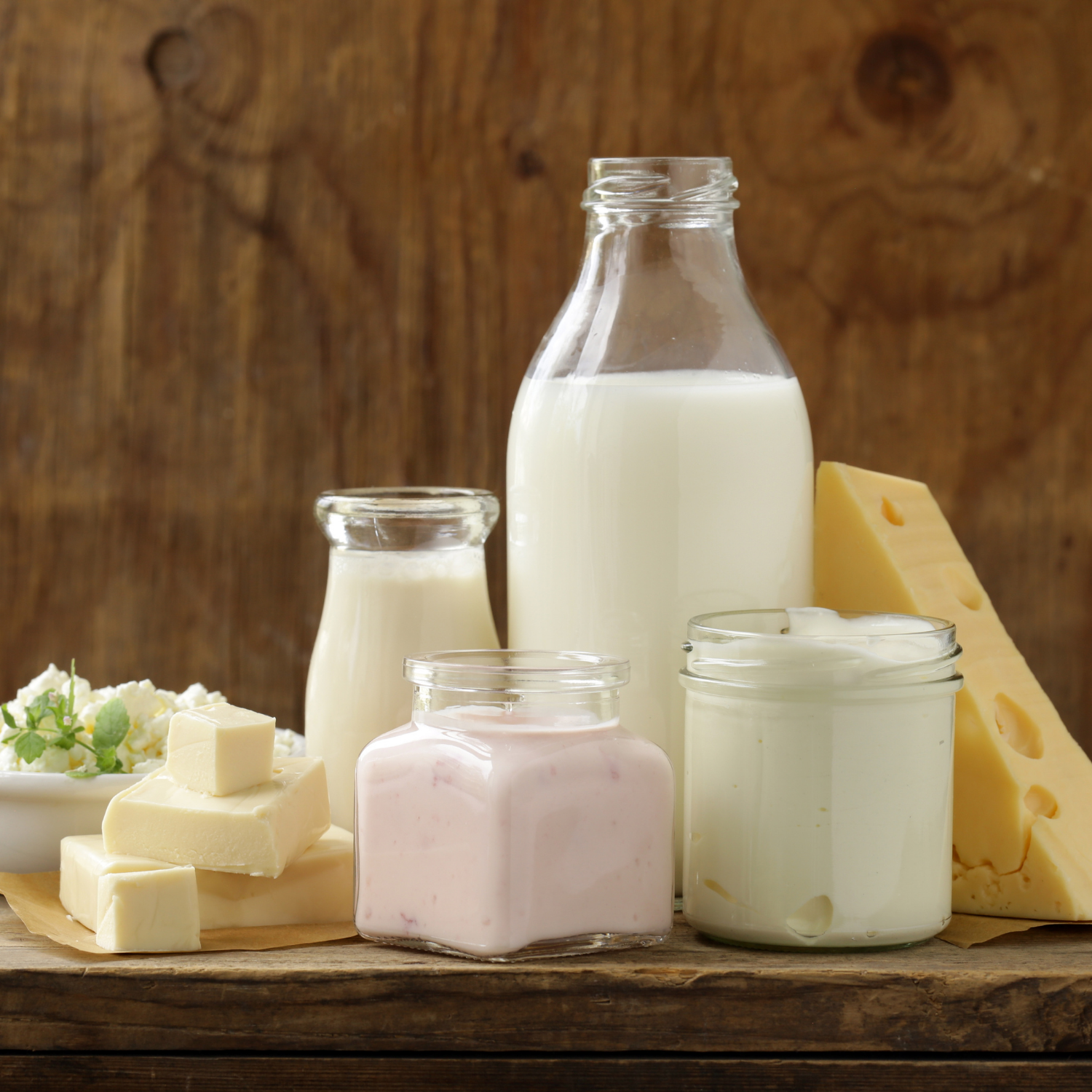



Weekly beef and dairy digest: US tests USMCA dispute mechanism and Thailand reports new cattle disease
US beef sales are improving after a weeks-long slump and analysts predict that Argentina's beef export ban will last longer than 30 days.US beef sales improve in latest reporting period
US beef net sales of 27,900 metric tonnes (MT) reported for 2021 were up 19% from the previous week and 45% from the prior four-week average. Increases were primarily for China (9,000 MT, including decreases of 100 MT), Japan (8,800 MT, including decreases of 500 MT), South Korea (6,000 MT, including decreases 400 MT), Indonesia (1,100 MT), and Taiwan (1,000 MT, including decreases of 100 MT).
Exports of 19,400 MT were down 1% from the previous week, but up 4% from the prior four-week average. The destinations were primarily to Japan (5,400 MT), South Korea (4,900 MT), China (3,500 MT), Taiwan (1,300 MT), and Mexico (1,300 MT).
Export Adjustments: Accumulated exports of beef to the Netherlands were adjusted down 33,589 MT for week ending 13 May. This shipment was reported in error.
US launches trade dispute against Canada dairy industry
The Biden administration has initiated a trade dispute against Canada’s dairy industry, triggering for the first time the new US-Mexico-Canada Agreement’s (USMCA) mechanism to review such complaints.

US Trade Representative Katherine Tai said the administration requested a dispute settlement panel to review Canadian measures the US says limit the ability of American dairy exporters to sell products to consumers north of the border. The USMCA, which took effect last July, included language to expand access for US dairy farmers and processors to Canada's domestic dairy market. “A top priority for the Biden-Harris Administration is fully enforcing the USMCA and ensuring that it benefits American workers,” Tai said in a statement.
The USTR alleges Canada has improperly allocated USMCA tariff-rate import quotas on 14 dairy products, diverting some of them to Canadian processors and limiting export opportunities for US dairy farmers and processors. According to the International Trade Commission, the USMCA — if implemented as negotiated — would boost US dairy exports by more than $314 million a year. The US Commerce Department’s International Trade Commission has done an initial analysis on the cost of the TRQs to the US dairy industry, but the USTR didn’t disclose the figure, saying this will be under discussion during the implementation phases of arbitration, should the US be successful. The agreement does provide for the possibility tariffs as a form of retaliation, but “we’re a long way from that process,” a USTR official said.
Canada’s Trade Minister Mary Ng expressed disappointment with the request and said she is confident the country’s policies are “in full compliance” with its tariff-rate quota obligations. Canadian Prime Minister Justin Trudeau was asked about these trade tensions in lumber and dairy earlier Tuesday at a press conference in Ottawa. “We will always stand up for our forestry workers and the industry across the country. We will continue — as we did successfully in the previous administration — to stand up to defend Canadian interests and values wherever necessary and that will continue,” Trudeau said.
Canada’s dairy industry said its quotas are in line with the trade agreement, and the government has a solid case to present to the panel, said Pierre Lampron, president of Dairy Farmers of Canada. The Dairy Processors Association of Canada is confident its policies are in full compliance with its obligations, and it’s ready to support the Canadian government defending its position, it said.
USMCA allows 30 days for the panel to form. It will file an initial report in roughly 120 days and a final report 30 days after that.
US House Ways and Mean ranking member Kevin Brady (R-Texas) said: “Amidst a number of concerning USMCA implementation issues, including in Mexico’s energy and agricultural sectors, we must not hesitate to stand up for the rights of American farmers, workers, families and businesses,” Brady said. “I urge the administration to fully enforce all aspects of the agreement in order to maintain the strong bipartisan support that it enjoys.”
Representative Ron Kind (D-Wis.) praised the decision, along with the US Dairy Export Council and the National Milk Producers Federation. But David Von Ruden, president of the Wisconsin Farmers Union, said: “Instead of trying to gain a sliver of access to Canadian dairy markets, which would undermine Canada's supply management system, the US should focus on managing domestic milk production to meet profitable demand for dairy farmers,” he said.

Argentine beef export suspension could last much longer
Last week, Argentina announced it would suspend beef exports for at least 30 days to slow domestic food inflation, which is running at approximately 50%. Said one analyst, “If history is a lesson, it is doubtful if the beef export suspension will be lifted after 30 days. The last time such action was taken, it stayed in place in one form or another for years.”
Thailand sees skin disease outbreak in cattle and buffalo herds
Thailand has restricted the movement of cattle and buffaloes after an outbreak of a virus that causes lumps to form on the animals’ skin, which can reduce milk production but is rarely fatal. The disease is new to Thailand and is thought to be spread by flies or mosquitos. It has infected 6,700 cows and buffaloes across 35 provinces. The prime minister is concerned smuggling of animals from neighboring countries could be making the situation worse. Official livestock registration data cited by Reuters shows Thailand has 6.2 million beef cattle, 707,000 dairy cattle and 1.2 million buffaloes.
China drives big rise in record US agricultural exports; imports also seen at record high
US agricultural exports in Fiscal Year (FY) 2021 are seen hitting a record $164 billion, an increase of $7 billion from their prior outlook, with China’s demand for US agricultural products driving the increase. Higher forecast levels for US corn, soybean, livestock, poultry and dairy products exports are the keys, with FY 2021 corn exports seen at $17.2 billion, up $3.2 billion from the prior outlook, on “strong demand and reduced competition.” USDA expects overall livestock, poultry, and dairy exports to hit $34.2 billion, $1.6 billion higher than the February projection, “due to increases in the dairy, pork, and beef forecasts.”

For China, USDA now forecasts the country to import a record $35.0 billion in US agricultural products, up $3.5 billion from their February outlook, “due to record shipments of soybeans, corn, tree nuts, beef, wheat, and poultry products. China is forecast to remain the largest market for US agricultural exports in FY 2021, followed by Canada and Mexico.”
USDA noted that for the first six months of FY 2021, “US shipments of soybeans, corn, tree nuts, beef, wheat, and chicken paws have remained at record levels, while total US agricultural exports to China reached $22.2 billion, 179% higher than the same period last year. Outstanding sales of corn remain at unprecedented levels.”
US dairy market at a glance
Cheese highlights
Cheese producers are running active schedules in all regions. Producers continue to take on flush-level milk supplies, but with fewer spot trades reported in the Midwest, the reported price range tightened to $1.50 under Class to flat Class. For a recent historical perspective, last year's price range was $5.50 under Class to $.50 over.
During week 20 of 2019, the price range was $2 under to $2 over Class III. The updated CDC recommendations regarding further easing of COVID-19 restrictions due to lower infection rates and an increase in the vaccinated population have given some cheese contacts bullish near-term viewpoints regarding food service sales. However, demand notes this point are mixed, and in some cases, bearish.

Butter highlights
Cream availability is stable in the Northeast and West. Central butter makers are sourcing cream from the West or South. Production is ongoing as manufacturers prepare for fall demand needs. Inventories are stable and satisfying current contract and spot demands. Retail orders are seasonally flat to lower. Food service is on a strong upswing from historic lows last year. Within that strength, however, there are fluctuations in food service butter demand from week to week and region to region. Across the country, bulk prices range from 1.0 to 8.0 cents above the market this week.
Fluid milk
Milk production is leveling off in the Northeast and Central regions, decreasing in the Southeast, and mixed throughout the West. Class I demand varies, but milk supply is steady for bottling needs. Although summer programs and educational institutions are preparing to supply free meals to kids throughout the summer, some contacts expect Class I sales to decrease as the school year comes to a close.
Midwestern cheesemakers report that spot milk is abundant as cheese production ramps up. Cream supply is meeting demand and is particularly plentiful in the West. Butter churning is seasonally active, and Class II cream-based manufacturers are working through healthy volumes. Cream price changes are mixed from region to region. Condensed skim markets are stable, and some operations are working through steady contract sales.

National retail report
Conventional dairy ad numbers increased 12% this week. Although decreasing in ad numbers by 1%, the most advertised conventional dairy item this week is 48 to 64-ounce containers of ice cream. The national weighted average price is $3.24, up $0.19 from last week. Conventional 1-pound butter has an average price of $3.05, up 9 cents from last week.
Conventional cheese ad numbers increased 9%. The weighted average advertised price for conventional 8-ounce shred cheese is $2.49, down $0.16 from last week. The national weighted average price for conventional Greek yogurt in 4-6-ounce containers, the most advertised conventional yogurt container size, is $0.97, down 2 cents from last week.
The national weighted average price for conventional half gallon milk is $2.31, up from $1.38 last week. The national weighted average advertised price for organic half gallons is $4.36, up from $4.16 last week. This results in an organic price premium of $2.05.
TheCattleSite News Desk
IMPORTANT NOTE: I am not a futures broker and do not manage any trading accounts other than my own personal account. It is my goal to point out to you potential trading opportunities. However, it is up to you to: (1) decide when and if you want to initiate any traders and (2) determine the size of any trades you may initiate. Any trades I discuss are hypothetical in nature.
Here is what the Commodity Futures Trading Commission (CFTC) has said about futures trading (and I agree 100%): 1. Trading commodity futures and options is not for everyone. IT IS A VOLATILE, COMPLEX AND RISKY BUSINESS. Before you invest any money in futures or options contracts, you should consider your financial experience, goals and financial resources, and know how much you can afford to lose above and beyond your initial payment to a broker. You should understand commodity futures and options contracts and your obligations in entering into those contracts. You should understand your exposure to risk and other aspects of trading by thoroughly reviewing the risk disclosure documents your broker is required to give you.




